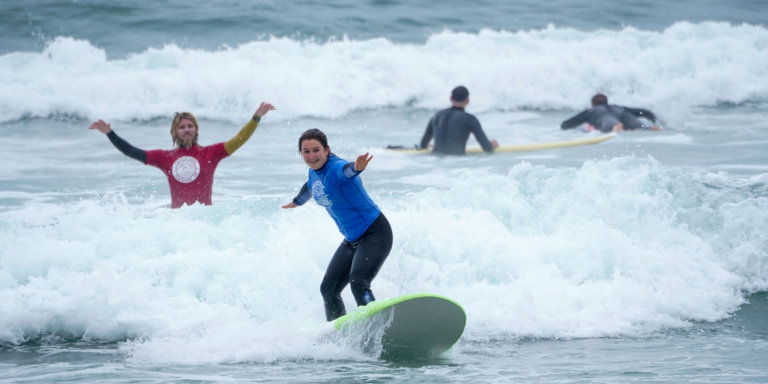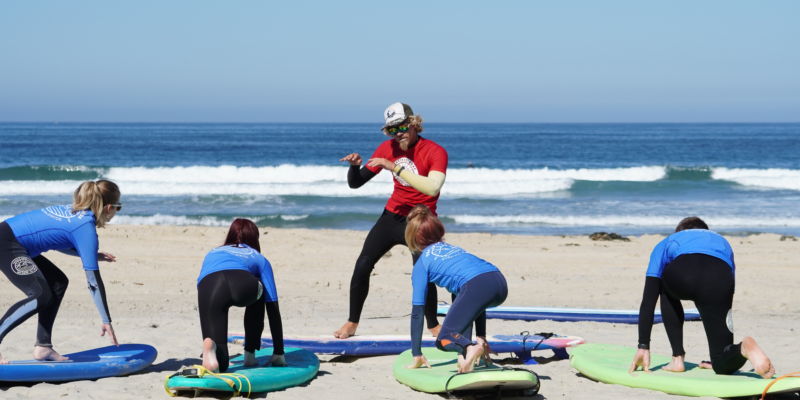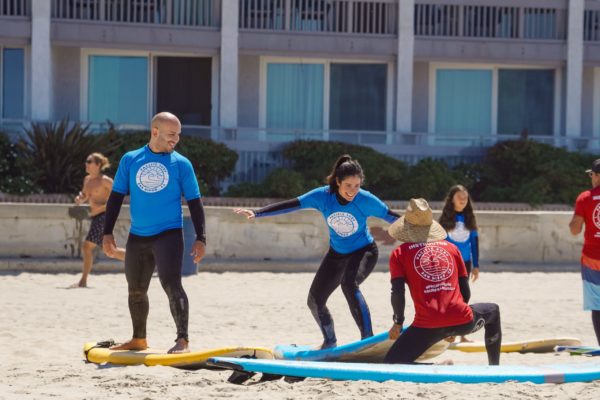Surfing is an exhilarating and adrenaline-pumping sport that brings you face to face with the power of the ocean. However, it’s important to remember that the ocean can be unpredictable and potentially dangerous. That’s why at Surf School in San Diego, we prioritize safety and encourage all surfers to follow proper surf etiquette and develop a strong sense of ocean awareness. In this blog post, we will delve into the importance of surf etiquette and ocean safety.

Understanding Surf Etiquette
Surf etiquette refers to the unwritten rules that govern the behavior and interaction amongst surfers in the lineup. By adhering to these guidelines, you not only ensure your own safety but also promote a positive and enjoyable surfing experience for everyone involved. Here are some key aspects of surf etiquette:
1. Respect the Right of Way
When paddling out to catch a wave, it is important to respect the right of way. The surfer closest to the peak or who is already riding the wave has priority. Avoid dropping in on someone else’s wave or paddling directly in front of another surfer who is riding a wave.
2. Communicate and Be Aware
Maintaining clear communication with other surfers is crucial for safety in the lineup. Use clear hand signals or verbal cues to communicate your intentions and avoid collisions. Always be aware of your surroundings and the position of other surfers in the water.
3. Share Waves and Space
Be considerate and share waves with fellow surfers. Don’t hog all the waves for yourself, and be mindful of spacing between riders to prevent dangerous collisions. Remember, surfing is a communal activity, and sharing the waves creates a harmonious vibe in the lineup.
4. Respect the Local Surfers and Breaks When surfing in a new location or at a popular break, it’s essential to show respect to the local surfers. Observe the lineup dynamics and take turns to avoid overcrowding or causing tension amongst the locals. Be aware of any local rules or regulations specific to the surf break you are visiting.
Developing Ocean Awareness
Alongside surf etiquette, developing ocean awareness is crucial for your safety and the safety of others. Understanding the ocean’s dynamics, currents, and potential hazards can help you make smarter decisions while in the water. Here are some key points to consider:
1. Learn to Read the Waves
Take the time to observe and understand the wave patterns before heading into the water. Reading the waves will help you gauge their size, power, and direction, allowing you to choose the most appropriate waves for your skill level.
2. Identify Rip Currents
Rip currents are strong, narrow currents that flow outward from the shore and can be hazardous if you get caught in one. Learn to identify rip currents by observing the flow of water, such as water appearing discolored, churning, or forming a channel that cuts through waves. If caught in a rip current, stay calm, swim parallel to the shore, and then back towards the beach.
3. Be Mindful of Hazards
Pay attention to potential hazards such as rocks, reefs, or shallow sandbars. These obstacles can cause injuries if not navigated properly. Always survey the area before paddling out and be aware of any obstacles that may affect your surf session.
4. Know Your Limits
Surf within your abilities and never underestimate the power of the ocean. It’s important to know your limits and avoid putting yourself or others at risk. If conditions become too challenging or dangerous, it’s okay to call it a day and come back another time.
At Mission Beach Surf School, we prioritize the safety of our students. Our experienced and certified instructors not only teach surf skills but also emphasize surf etiquette and ocean awareness. We invite you to join our surf lessons in San Diego to learn not only how to ride the waves but also how to do it safely and responsibly. Book your lesson today and experience the thrill of surfing while staying safe in the water.







